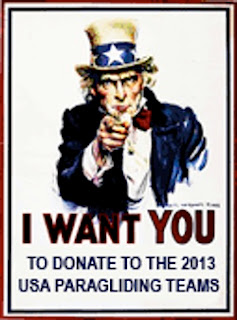For many pilots new to paragliding, and to those who primarily fly coastal sites with sea breezes, thermals are turbulent, scary, and confusing. For those who want to go cross-country, thermals are a necessary and welcome step along the way to success.
How do you find thermals? Many thermals are simply found by accident as you navigate along your route. You can increase your chances of encountering thermals by observing and flying to "triggers" in the topography below. Variations in the makeup of the surface, bumps and ridges, even power-lines and water features can affect the location of lift. Look for birds, debris, and other gliders.
 Once you encounter a thermal your job is to "center the lift" so that your circle (or oval - if necessary) is in the strongest lift for 360°of turn. There are many opinions on how to do this, and I'm of the school that weighs physical feedback heavily in the centering techniques. Using your variometer to guide you is fundamental. Below is a video that shows, graphically, the result of "Decreasing the turn in weaker lift and increasing the turn in stronger lift." This rule is a good starting point, but should be tempered with other inputs such as visual and physical clues.
Once you encounter a thermal your job is to "center the lift" so that your circle (or oval - if necessary) is in the strongest lift for 360°of turn. There are many opinions on how to do this, and I'm of the school that weighs physical feedback heavily in the centering techniques. Using your variometer to guide you is fundamental. Below is a video that shows, graphically, the result of "Decreasing the turn in weaker lift and increasing the turn in stronger lift." This rule is a good starting point, but should be tempered with other inputs such as visual and physical clues.A great book with information on thermalling, triggers to look for, and guidelines to flying XC in thermal conditions, is Thermal Flying by Burkhard Martens. I owned the original edition of this book and it recently was revised and expanded. The second edition's readability is much better and the breadth of information is invaluable. I highly recommend this book.



